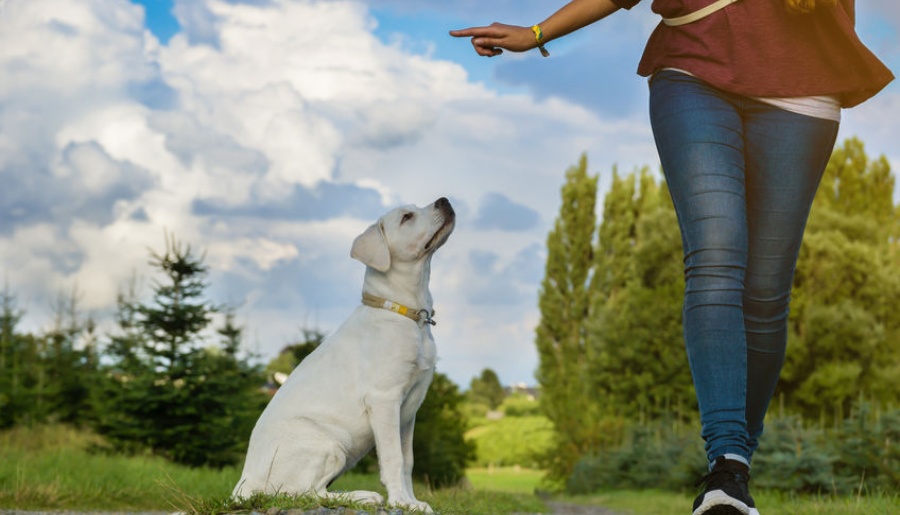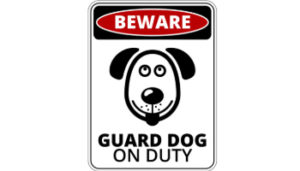
Have you ever owned one of those dogs that just refused to be trained? You all know what I’m talking about. I’m talking about those dogs that don’t listen, don’t behave, and don’t want to change. After dealing with dogs like that, most people will be ready for a nice, even-tempered, well-controlled dog.
So, are Labradors easy to train? The answer is that they usually are. However, it also depends on what kinds of results you expect. Labradors are exceptionally easy to train as hunting dogs, but are slightly less easy to train for other purposes like security.
Let me explain a bit further witchdf can have an influence on how easy it is to train your Labrador.
Labradors Are Meant For Waterfowling?
To recap that which I have already covered at length in another post, the Labrador is very easy to train for hunting, and especially for retrieving waterfowl. The simple reason for this is the fact that the Labrador and its ancestor(the now-extinct St. John’s water dog) have been used in this kind of hunting for centuries.
Labradors Are More Difficult To Train As Guard Dogs
Labradors have always been known as friendly dogs with whom the whole family can easily get along. This is one of the qualities that has made the Labrador the most popular dog in America. However, this same friendly and trusting nature makes it more difficult to make a guard dog out of one. It is by no means impossible, but they are likely to require much more training to be security dogs, as compared to many other large breeds. If you really want a dedicated guard dog, you might consider a German Shepherd or a Pit Bull. An Akita can also be a great protector. In fairness to the Labrador, it should be noted that they tend to be powerfully devoted to the safety of their pack, and that protective instinct can be nurtured into a powerful territorial drive.
Labradors As Search-And-Rescue Dogs
For those of you who may feel a little disappointed by the fact that your Lab probably won’t scare away intruders, take heart! Labradors show their bravery and heroism in other, less aggressive ways. If you look at this overview of the breeds that are most commonly used for search and rescue operations, you will see that the Labrador and its close relatives dominate the list. Even without being trained to do so, these modern-day water dogs are known for saving other creatures from drowning. When dogs need to go into a watery environment such as a cave during a flood or anywhere on the water, water-loving dogs like the Labrador are most likely to come to your rescue. Labradors are used as tracking dogs for both humanitarian and law enforcement purposes, as well as doing the unpleasant job of sniffing out corpses after a disastrous event.
After the terrorist attacks of September 11, 2001, a lot of work had to be done. Some of the great unsung heroes that took part in that work were the search and rescue dogs who arrived on the scene to pull survivors and bodies from the wreckage of the towers. If you look at this short overview of the dogs involved, you can see that most of them were either Labradors or Golden Retrievers, who are a related breed. Some of these dogs spent shifts of ten to twelve hours digging through smoldering hot rubble. With such a difficult and dangerous job, it is logical to assume that trainers wouldn’t want to hamstring their efforts by using a dog that is difficult to train.
Making The Training Process Easier
We have established that the Labrador is a dog that is quite easy to train, in comparison to other dogs. However, there are a number of things we can do in order to make the process easier. With any breed of dog, it is best to work with their natural inclinations rather than working against them. Working against a dog’s instincts is a recipe for failure.
First of all, make sure you start training your dog at an early age. Although there are a few exceptions, all sorts of training require an early start. A pup is almost never too young for some kind of training. In human societies, the games that children play are often thinly-veiled training exercises that serve to prepare them for the roles that they are expected to fill when they reach adulthood. This principle can be used to instruct puppies much like it is used to instruct humans. For instance, if your dog is supposed to be a waterfowling dog, you can start by playing fetch. If you want a rescue dog, you can start by playing a game of hide-and-seek, rewarding the dog if they are able to find you. For a guard dog, you would start with games that involve chasing and biting. For a dog that you plan to enter in jumping competitions, you might begin by making them jump for treats. With a little imagination, training becomes a game.
On The Use Of Discipline
Another key is to use positive reinforcement while going easy on the negative reinforcement. While some dogs will respond well to a harsher mode of discipline, Labradors do not. These dogs tend to be gentle-natured, trusting, and sensitive. They respond to harsh discipline with fear and confusion rather than with obedience. This is not to say that you can never scold them or swat them on the bottom, but you should never, ever hit them in anger. They will interpret this as an attack, and may very well attack you. If you beat your dog and get bitten for it, you will have absolutely no right to blame the dog for defending itself. Beating a dog is never the right way to go anyway. At the most, I might give mine a little swat across the behind. Any more than that is both pointless and wrong. The important thing when disciplining your dog is to let them know that they have displeased you. This actually seems to bother dogs more than physical pain, making for a better lesson.
But to get back to the main point, Labradors respond better to positive reinforcement, which could also be described as ”rewarding good behavior.” The reward might consist of a small treat, a trip outside, or just petting and praise. Either way, dogs have a tendency to continue doing something that brings a reward. For a positive-natured animal like a Lab, you will probably get faster results from rewards than you will from punishments.
Some people recommend the use of a clicker for training a dog. I don’t often use this method myself, but it is definitely a good one. It works by using a device that makes a distinctive clicking sound. You might wonder how that can be used to train a dog. It works like this; as soon as your dog performs the desired behavior, immediately make the click. This will grab your dog’s attention, and you will then give him a treat. This clicking sound helps the dog to identify exactly what he did to win a treat. The click removes the delay between obedience and reward. I haven’t found it necessary, but anything that helps you to communicate better with your dog can only be helpful.
Another training tip is to remember this simple fact: A dog will obey one person better than two. What do I mean by that? I mean that a dog will often follow commands much better when they are alone with the trainer. With no other people or dogs to distract them, they will be focused on what the trainer says. Still, a dog must be trained to obey in spite of distractions. Therefore, you should begin by training your dog one-on-one and then adding distractions later, when you are confident that they will be ready.
Related Questions
On a scale of one to ten, how hard are Labrador Retrievers to train?
Assuming that one is the easiest, I would rate them between 2 and 3. Their rowdy, knuckleheaded nature makes them a little hard to handle at times, but they are naturally obedient once you get their attention. However, this factor will vary a lot with each individual dog and for different kinds of training.
Is it true that retrievers will retrieve without training?
Not always. Breeding does matter when it comes to behavioral tendencies, but rearing and training matter a whole lot more. Despite many years of consistent habit, not all retrievers will retrieve as a natural behavior. This myth is not without grounds, because most young Labs will take quickly to the game of fetch.
What can you do about an extremely disobedient dog?
The first thing is to control your anger and resist the urge to knock the hell out of the dog. No matter what they did, you won’t help the situation that way. If you are faced with a really extreme troublemaker, you have to put the dog on lock-down for a while. This means that the dog will have virtually no freedom and will spend most of their time in a cage or on a leash. The point of all this is to make them understand their place in the pack and to make them understand exactly what is expected of them. To be clear, let me emphasize that you should never do this for longer than one month. If one month doesn’t do it, two probably won’t do it either.



